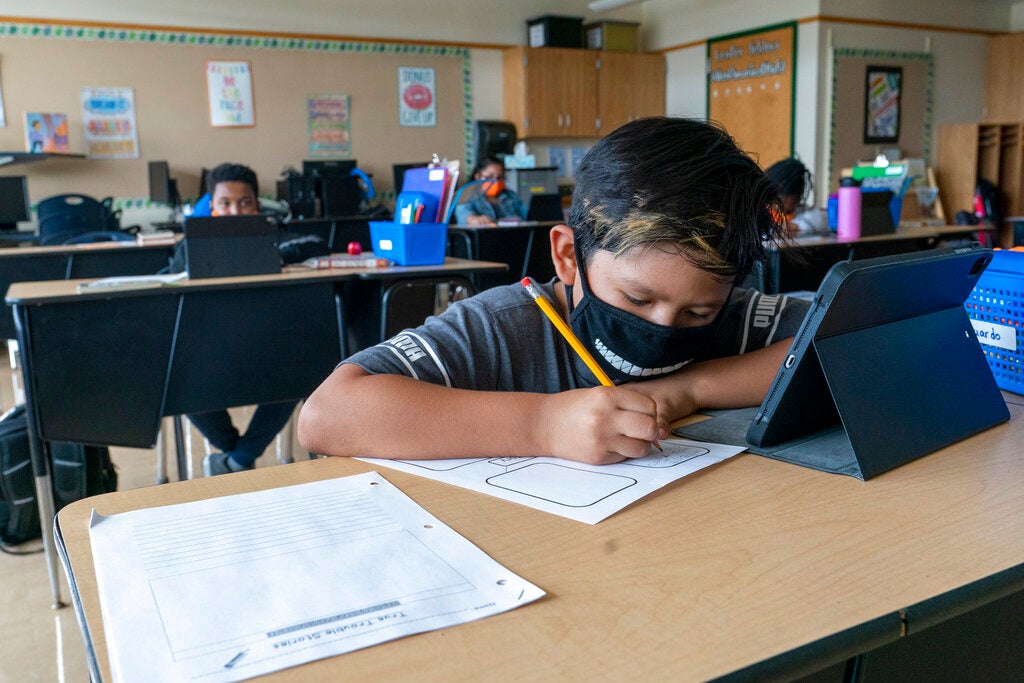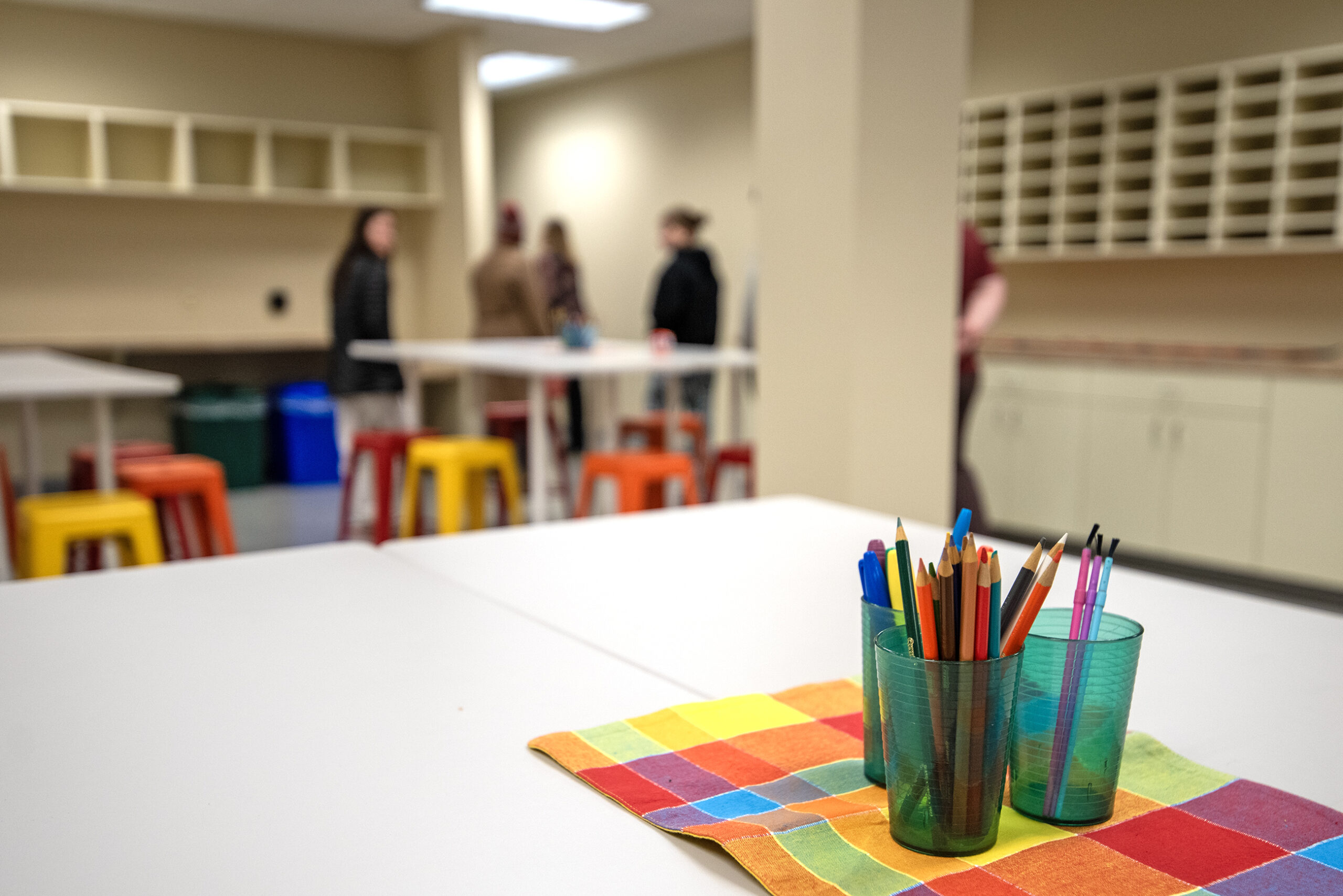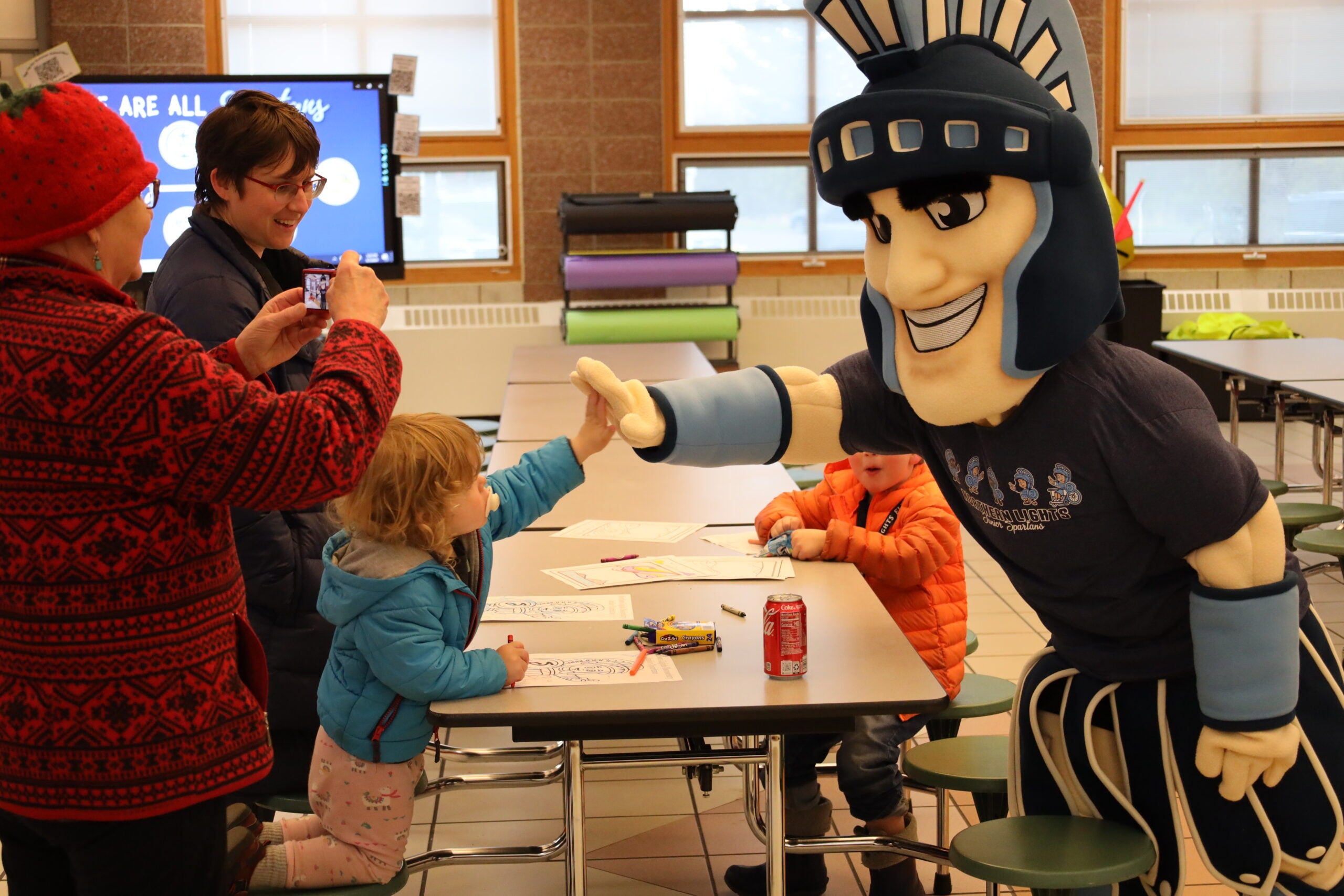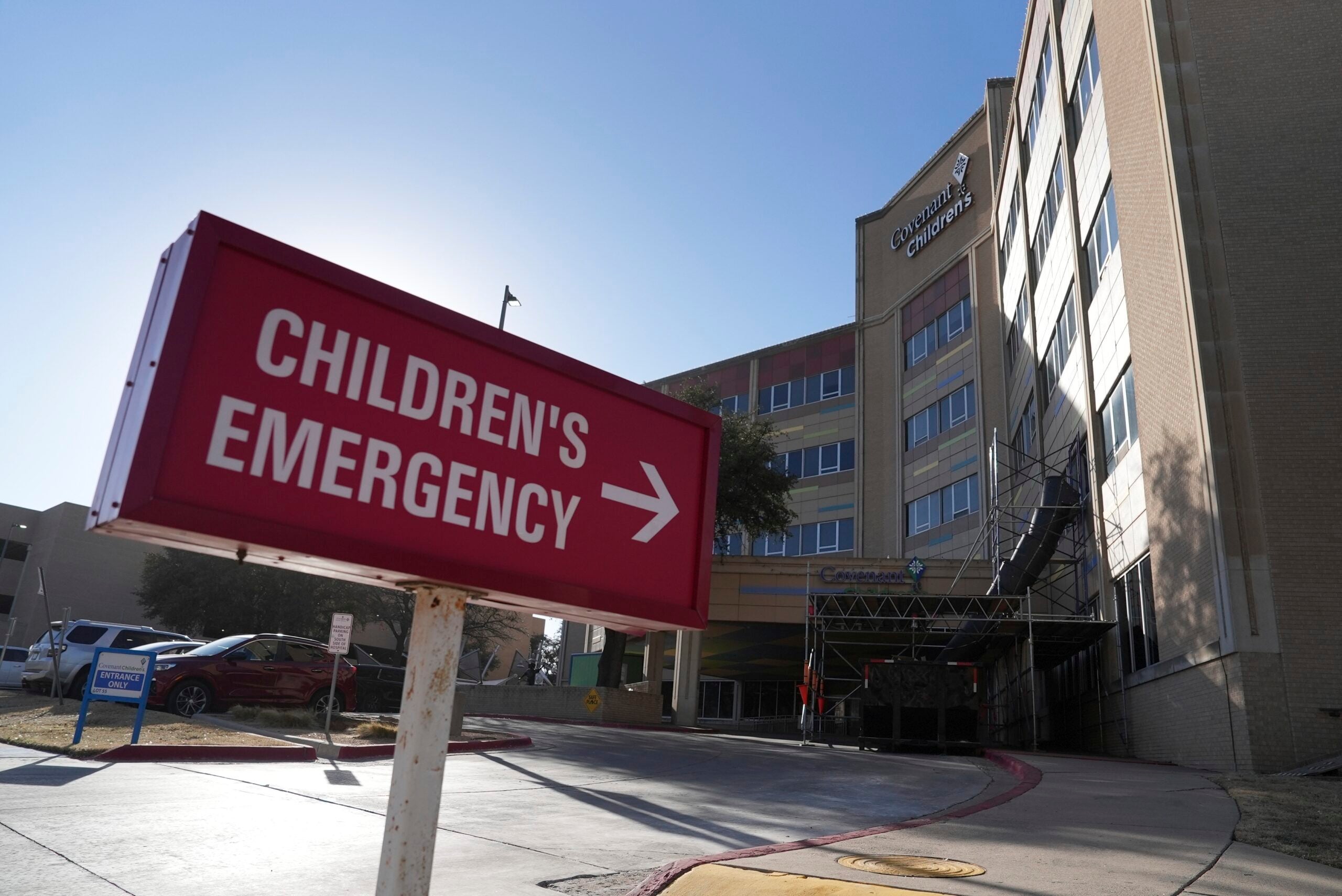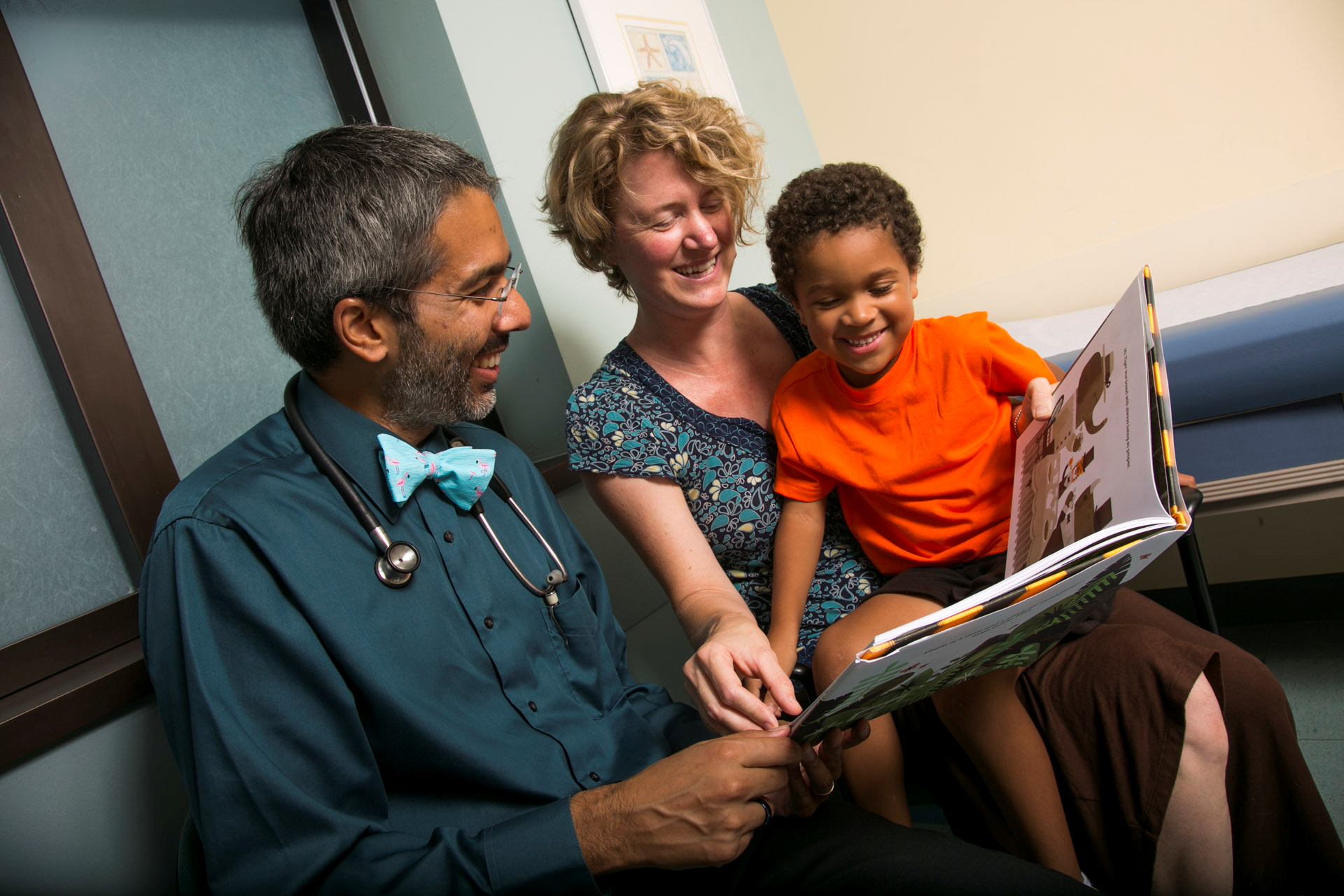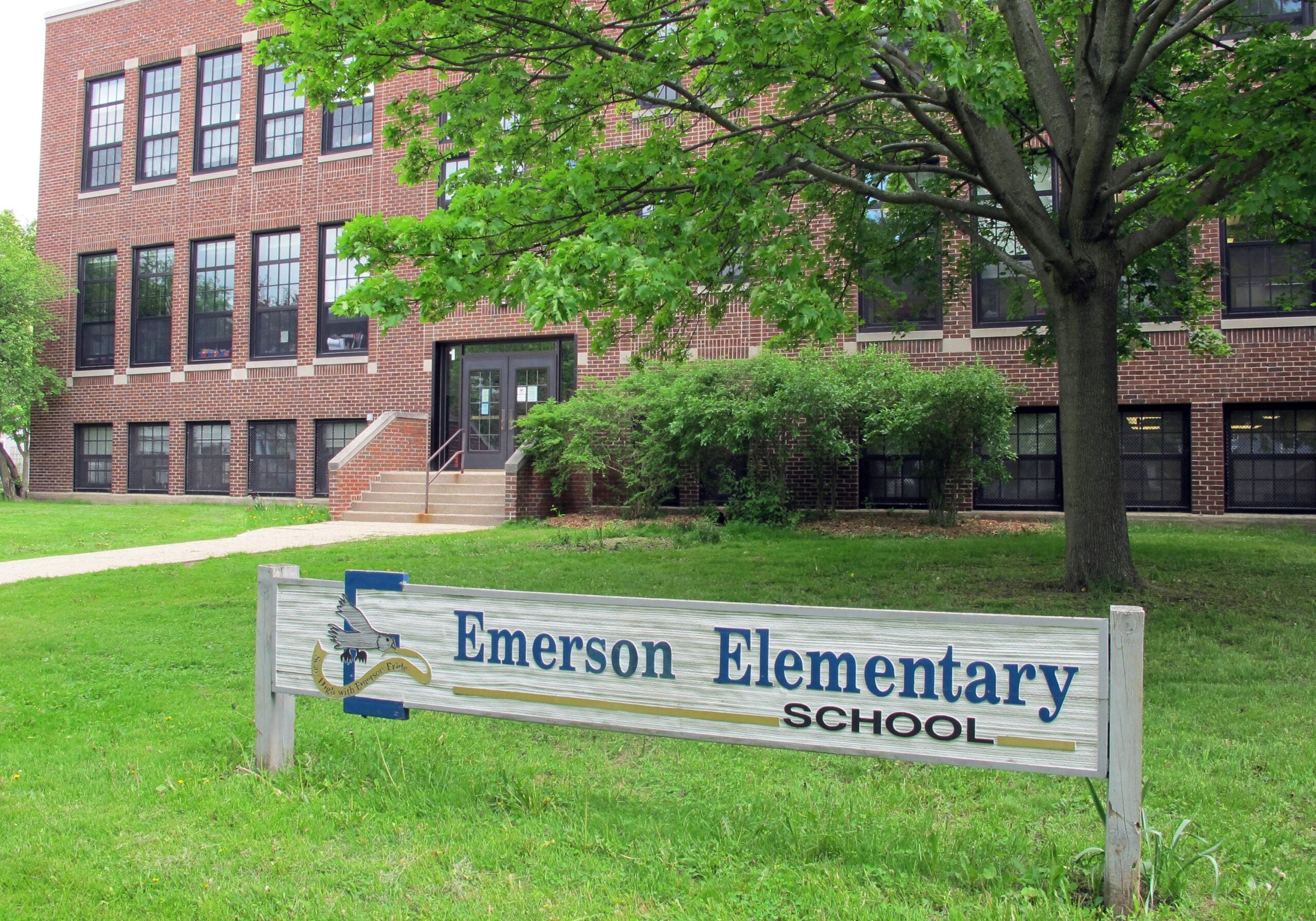Hundreds of Wisconsin doctors who care for children are calling on Wisconsin schools to institute masking and other disease mitigation measures as COVID-19 numbers are again climbing throughout the country.
“This is an appeal, really, to school administrators and other officials in schools, and most importantly to parents and anyone whose decision-making about masks in schools,” said Dr. Ellen Wald, a University of Wisconsin-Madison pediatrician who was one of nearly 500 doctors to sign the open letter from UW Health released Wednesday. “We think this is such an important intervention.”
Wald emphasized that masking everyone in schools has universal support among the Centers for Disease Control and Prevention, the American Academy of Pediatrics, the Wisconsin Department of Health Services and other health agencies.
Stay informed on the latest news
Sign up for WPR’s email newsletter.
Doctors say the delta variant of COVID-19 is, in many ways, an entirely new disease — it’s more contagious, for example, and can spread even among vaccinated people — which means schools and families should be even more careful going into this school year.
“This year is a completely different beast than last year,” said Dr. Amy Falk, a pediatrician in Wisconsin Rapids. “It’s really ripping through communities, making little kids sick, things that we did not see last year.”
Falk and her team in Wisconsin Rapids led one of the CDC studies that showed COVID-19 transmission in schools was very low, as long as everyone wore masks and socially distanced as much as possible.
“We’re seeing school districts make terrible decisions, namely, pretending like it’s 2018 and going back with masks, quote, optional, and little distancing,” she said. “I just don’t think we have the luxury to do that — we are still knee-deep in a pandemic, I would say worse off than we were last year.”
Several school districts recently voted to require masks for at least the first part of the school year, including in Janesville and neighboring Milton. The school district where Falk ran the study is requiring masks for pre-K through eighth grade and making them optional for high schoolers, though board members received significant backlash for requiring masks at all. Many school board members who have pushed for masks and other COVID-19 precautions have faced bitter election challenges, recall efforts, verbal abuse and meetings so unruly that they had to be shut down.
“School districts are going to have to understand what their priorities are,” said Dr. Sarah Lulloff, an infectious disease specialist in Green Bay. “We know from science that masking does limit the transmission of the virus, and especially with kids and age groups that can’t yet get vaccinated, that they are definitely transmitters of the virus when they do become infected.”
State superintendent Jill Underly also released a message Wednesday calling on communities to wear masks and for everyone eligible for the vaccine to get it.
“Across the nation, we’ve watched schools open with limited mitigation measures in place be forced to close just weeks — or even days — into the new school year,” she said. “We all want our schools open. We must collectively do our part to make sure that is possible. And it’s on us to do everything in our power to serve the children, families, and educators of Wisconsin.”
Lulloff pointed out that universal masking and distancing can keep kids from losing hours of instruction time to quarantining, even when they’re not sick. According to the CDC’s guidance, if one student tests positive, but they were only around another student with their mask on consistently and correctly and kept at least 3 feet apart, that second student would not need to quarantine.
“The goal for most families, students, educators, and school districts is to have in-person school,” said Lulloff. “We know one thing that helps to keep school in place is if there are lots of safety practices, including masks.”
Falk, in Wisconsin Rapids, noted that when students and staff stayed masked last year, her team saw not only low COVID-19 transmission, but the near disappearance of infections that usually spread among students, like the seasonal flu, respiratory syncytial virus and strep throat.
“It was unreal, I did not see anything — my kids weren’t sick, we were not seeing ear infection after ear infection like a typical February,” she said. “That makes a big difference — that’s less time off of work, that’s less time feeling sick and crummy out of school, that’s less time possibly getting very sick.”
Wisconsin has been seeing an unusual spike in hospitalizations for those illnesses, particularly RSV, over the summer. Wald, the UW-Madison pediatrician, said they’re likely to spread in schools without masks, and could result in students showing up with COVID-like symptoms.
“When a child presents with a runny nose or a cough or a sore throat, we can’t tell COVID from an ordinary cold, and so all of those children will need to be tested, they’ll need to be quarantined until those results are available,” she said. “Children are going to lose valuable time from school.”
Wisconsin Public Radio, © Copyright 2025, Board of Regents of the University of Wisconsin System and Wisconsin Educational Communications Board.
